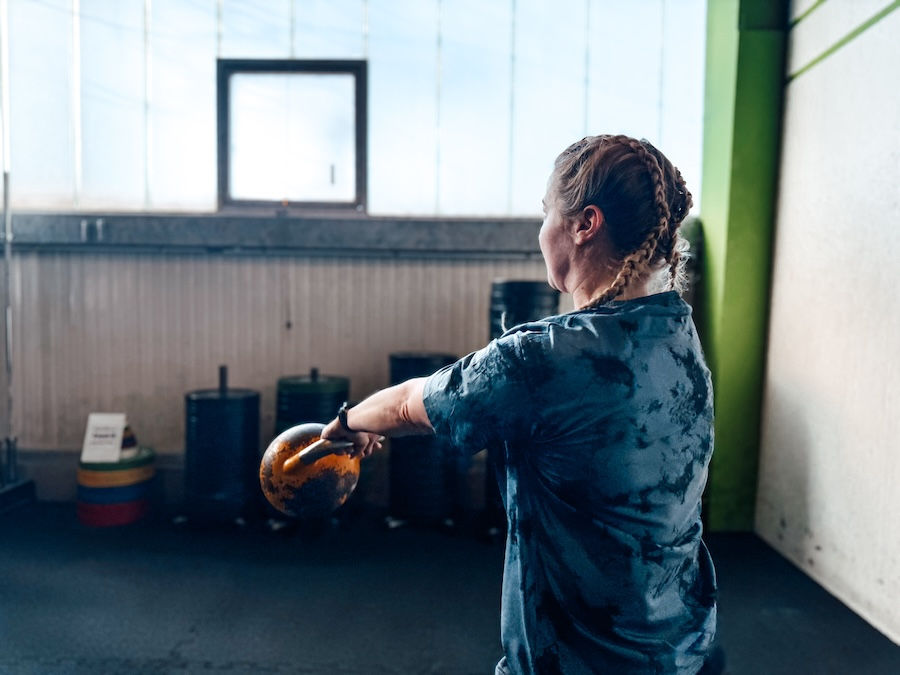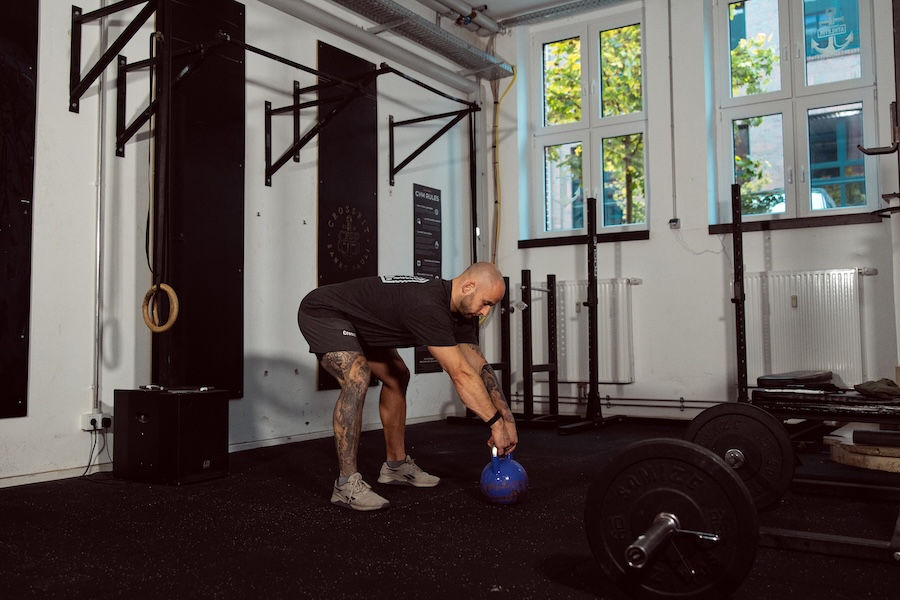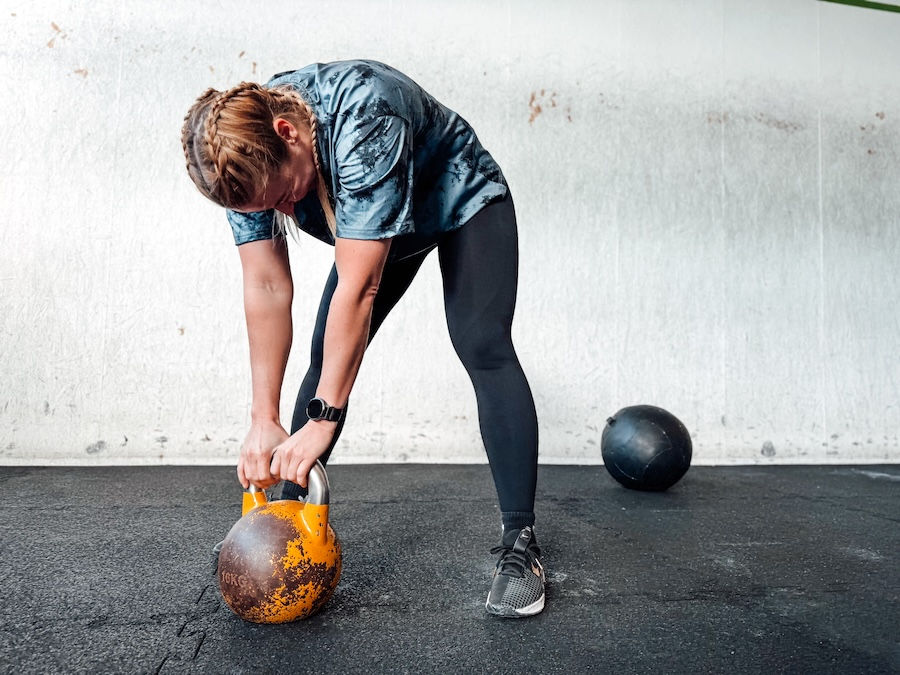Kettlebell Swings – Technique, Variations, and Tips For Your Workout
- Lin ny
- Aug 17, 2025
- 4 min read
There are exercises that are simply classics – and the kettlebell swing is definitely one of them.
Whether in functional training, CrossFit, or even in athletic training for professional athletes, the swing is almost everywhere. Why? Because it trains strength, explosiveness, and endurance in a single movement.
The cool thing about it: with a kettlebell and a little space, you can get started right away. No fancy equipment, no complicated setup—just you, the ball, and your hip swing.
What are kettlebell swings?

In short: Kettlebell swings are a dynamic full-body exercise in which you swing a kettlebell between your legs and forward with an explosive hip extension.
It is not an isolated strength exercise, but a movement that involves the whole body.
The focus is on the hips – the arms are only “guide rails.” You build up tension, stretch explosively, and transfer the energy to the kettlebell.
The exercise originally comes from classic kettlebell training, but has experienced a real hype thanks to functional fitness and CrossFit. Today, it is considered one of the most effective basics for improving strength and endurance at the same time.
What do I train with kettlebell swings?

In short: almost everything. Kettlebell swings are one of the few exercises that simultaneously build strength, endurance, and explosiveness. You get a real full-body workout—in one movement.
Which muscles are involved?
Glutes (butt muscles): Main motor for hip extension
Hamstrings (back of thighs): Help with explosive extension
Core (abdomen & torso): Stabilizes the upper body
Back extensors: Keep the spine upright
Shoulders & grip strength: Especially important for holding and stabilizing the kettlebell
What are the benefits for me?
Strength & explosiveness: Perfect for jumping power, sprints, and athletics
Endurance & fitness: High repetition rates push your cardiovascular system
Everyday transfer: Hip extension is a basic movement in life (lifting, running, jumping)
Time saving: A full-body workout effect in just a few minutes
What is the difference between Russian and American kettlebell swings?

If you spend a little time looking into kettlebell swings, you will quickly come across two variations: Russian swings and American swings.
At first glance, they look similar—the kettlebell swings forward—but the key difference is how high you lift it.
Russian swings – the “classic” version
The kettlebell swings up to about chest height.
The focus is clearly on hip extension – arms and shoulders remain relaxed.
Advantage: safer for the back and shoulders, very efficient for strength and explosiveness.
Typical in classic kettlebell and athletic training.
American swings – the CrossFit variation
Here, the kettlebell is raised above the head.
This also engages the shoulders and upper back muscles more effectively.
Advantage: Greater range of motion and required in some CrossFit workouts.
Disadvantage: More strain on the shoulders and spine – technique must be perfect.
Which option is better?
Russian Swings: If you're focused on strength, explosiveness, and safety.
American Swings: If you do CrossFit or want to specifically train your overhead stability.
Our recommendation: Start with Russian swings. They are easier, safer, and still give you the full training effect. Once you have mastered the technique and are familiar with CrossFit, you can try American swings.
How do I perform kettlebell swings correctly?

Technique is crucial. Incorrect execution turns the swing into a shoulder exercise—and that's not the point.
Step-by-step instructions:
Starting position: Feet shoulder-width apart, kettlebell 30–50 cm in front of you on the floor.
Setup: Bend your hips and knees slightly, grasp the kettlebell with both hands. Keep your back straight and your core engaged.
Initiate: Pull the kettlebell explosively between your legs and back.
Hip extension: Extend your hips forward vigorously, tighten your buttocks—the kettlebell will “fly” upward on its own.
Final position:
Russian swing: kettlebell to chest height.
American swing: Kettlebell controlled above the head.
Return: Let the kettlebell swing back in a controlled manner and start the next repetition immediately.
Important technical points
The arms are only "guide rails", not the motor.
Power comes from the hips, not the shoulders.
Keep your back neutral – no rounded back!
Breathing: exhale explosively as you extend your hips, inhale as you swing back.
What are the most common mistakes made when performing kettlebell swings – and how can I avoid them?

Beginners in particular make typical mistakes that not only reduce the effect but can also be dangerous.
The 3 most common mistakes
Work your arms instead of your hips → Solution: Imagine your arms are ropes – your hips do the work.
Round back → Solution: Push your chest out, tighten your core, and keep the kettlebell close to your body.
Too heavy → Solution: Start with a moderate kettlebell (women 8–12 kg, men 16–20 kg) and only increase the weight once you have mastered the technique.
There is one more point to consider with the American swing:
Uncontrolled overhead swinging → only swing as high as you can stabilize the position cleanly.
How can I incorporate kettlebell swings into my workout in a meaningful way?

Kettlebell swings are extremely flexible—you can incorporate them almost anywhere.
As a technical exercise
Warm up with 2–3 sets of 10–15 clean repetitions with light weights to activate your hips and core.
As strength and explosive training
5×10 Russian swings with moderate to heavy weight
Focus: Power from the hips, full tension in the core
As a conditioning tool
30–60 seconds of swings, then a short break → several rounds
Perfect for cardiovascular health and fat burning
In combination with other exercises
Swings + Burpees = endurance
Swings + Squats = Lower body volume
Swings + Pull-ups = complete upper and lower body
That's why kettlebell swings belong in every workout
Whether you are a beginner or advanced, kettlebell swings are one of the most effective exercises there is.
You train your legs, butt, back, and core simultaneously, improve your explosiveness, and boost your endurance.
If you master the technique and use progression wisely (e.g., more weight, more repetitions, or shorter breaks), you can achieve an incredible amount with this exercise—with just one kettlebell.




Comments